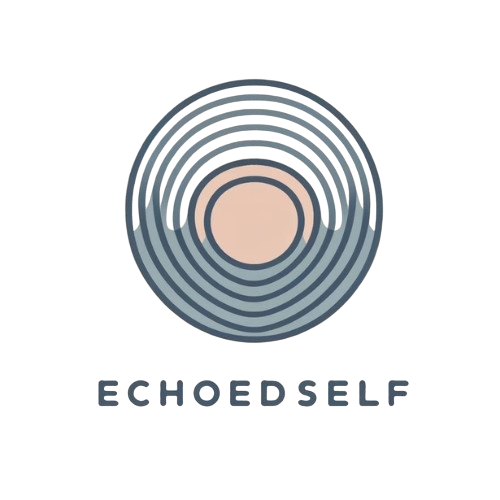The art of touch: Exploring tactile elements for sensory engagement
Fingertips sliding across bark, palms sinking into clay, threads tangling softly between knuckles—touch is the first language we learn. Long before we speak, we reach. We explore the world not with questions but with skin. In art, this language becomes a form of expression just as powerful as line or color. It’s not what we see—but what we feel.
In a world so often shaped by the visual, texture is an invitation to slow down. To notice. To return to the body. For artists, art therapists, and creative seekers alike, tactile engagement in art opens the door to presence, emotion, and a deeper kind of understanding—one felt beneath the surface.
Touch as language: When texture becomes voice
Touch grounds us. It soothes, alerts, remembers. In the creative process, it does more than decorate a surface—it speaks to the nervous system, calling forth memories and grounding emotion in movement.
In therapeutic settings, tactile art becomes a bridge between the seen and the unsaid. The push of thumbs into cool clay, the tearing of paper, the act of knotting thread—each gesture gives form to what might otherwise remain locked inside. Repetition becomes rhythm. Rhythm becomes calm. Texture becomes release.
Artists who explore texture intentionally find that it adds not just dimension, but emotional resonance. Smoothness may soothe. Roughness may challenge. Delicate layers might whisper grief or longing. Texture becomes not only aesthetic but symbolic—a sensory trace of inner life made visible and touchable.
Materials that speak through skin: Clay, fabric, and found things
There is a different kind of magic that happens when the hands lead. Clay, perhaps more than any other medium, offers that immediacy. Responsive and alive, it takes form under pressure. It yields, but it remembers. Sculpting becomes a dialogue—a way to shape feeling without needing to explain.
Fabric, too, holds memory in its threads. A scrap of worn cotton, a piece of lace from an old blouse, or the coarse weave of linen—all evoke sensation. Layering them, sewing into them, wrapping them around canvas or frame invites contrast and narrative. Soft meets rough. Old meets new. Memory meets motion.
And then there are the objects the world leaves behind: driftwood, shells, feathers, rusted keys. Each has its own texture, its own energy. Touching them is like holding a piece of time. Bringing them into art extends the story beyond the page or frame—it roots the work in place, in moment, in lived material.
Building texture: Tactile techniques and sensory contrasts
Texture doesn’t have to be complicated—it just has to be intentional. Paint thick and rough with a palette knife. Press dried flowers into gesso. Let a brush drag loosely over fabric. Run thread across wet pigment. Trace patterns into soft wax with fingertips.
Working with contrast is key: rough against smooth, heavy against light, matte against gloss. Let the tension between surfaces become a quiet visual poetry. Let it guide how the viewer feels the work—through eyes, yes, but also through the imagination of the skin.
Nature, too, offers materials rich in tactile complexity. Mix earth into paint. Crush dried herbs and dust them across layers. Use pigment made from soil, ash, or flower. These materials don’t just carry texture—they carry story. They remind the body where it comes from.
The viewer’s body: How texture changes the experience of art
When art includes texture, something shifts. The viewer doesn’t just look—they want to reach. Eyes trace what hands cannot touch. Imagination awakens in the muscles. Even when untouched, textured artwork invites presence.
In participatory art or therapy, encouraging tactile exploration becomes a form of embodiment. Tracing the raised grain of a painted surface, pressing palms into soft felt, or layering materials by hand turns art into a full-body conversation. It bypasses performance. It invites vulnerability.
Texture connects what we know intellectually with what we feel somatically. And in that connection, healing can begin—not just through what’s expressed on the canvas, but through how it is physically processed and received.
Everyday texture: Simple practices for sensory engagement
You don’t need elaborate tools or rare materials to bring touch into your creative life. Begin simply:
Press textures into damp paper—leaves, lace, shells.
Roll clay in your palms while listening to music or reflecting on emotion.
Sew or knot threads onto paper—long lines for breath, small loops for tension.
Layer fabrics with meaning—what feels comforting? What feels unfamiliar?
Carve or scratch into painted surfaces—what wants to be uncovered?
Choose materials not just for their color, but for how they respond to your hands. Let your body guide you. Let your fingertips choose what your eyes have not yet noticed.
Touch as presence, touch as portal
In the end, touch is not just about surface—it’s about presence. It is the art of paying attention, of honoring the connection between body, material, and meaning. When we bring our hands fully into the process, art becomes more than image. It becomes experience.
For those seeking depth in their practice, for therapists creating safe space, and for viewers longing to feel something real—texture is the invitation. It whispers: slow down. Come closer. Feel what’s here.
Let your art be something that lingers—not only in memory, but in the body. Let it be touched. Let it touch.
